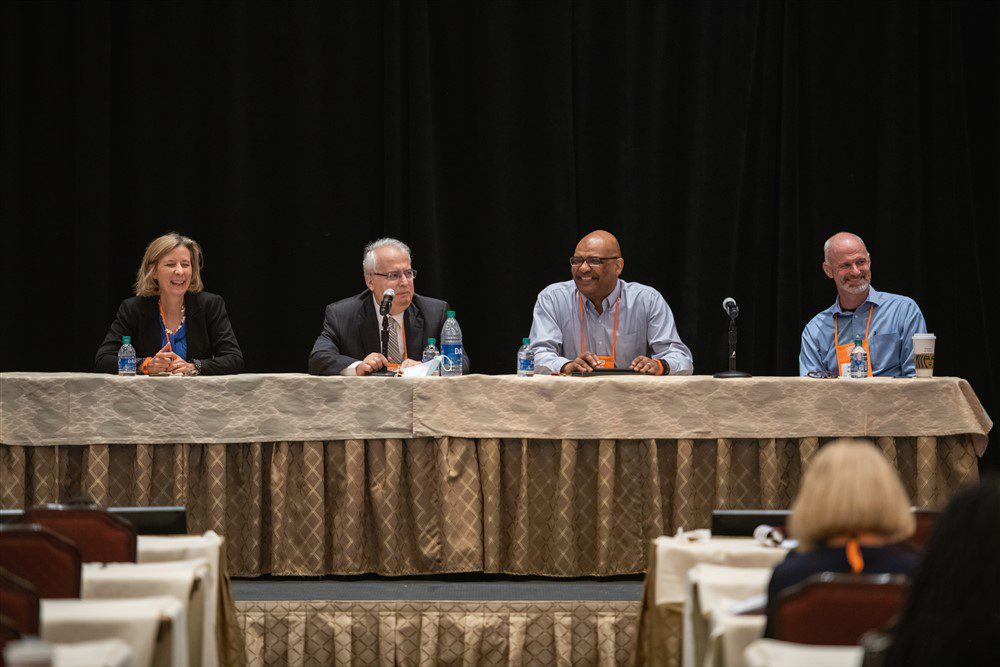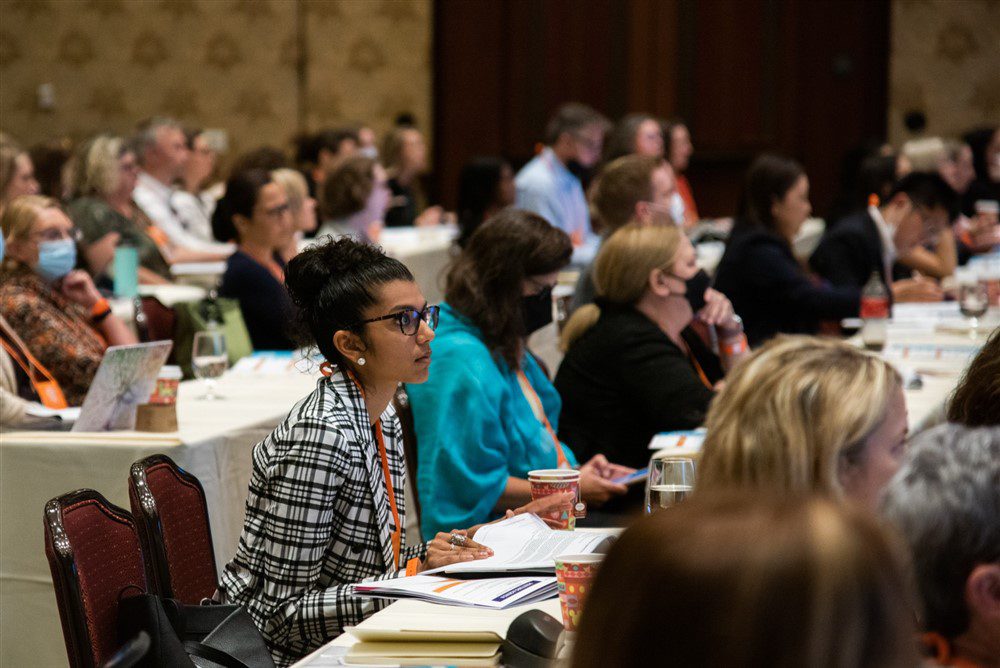In June, SMA researchers and clinicians from around the world met in Anaheim, CA, for the 2022 Annual SMA Research and Clinical Care Meeting. There they shared their most recent data with the goal of accelerating the pace of research into SMA treatments and achieving excellence in SMA clinical care. Below is a summary of the podium presentations featuring some of the most important and exciting new advances in basic and clinical SMA research.
Special Session – Reverse Translation: How do real world observations inform the most pressing basic research questions?

Dr. Charlotte Sumner, moderator, opened by explaining that the goal of the special session was to engage clinicians and basic science researchers in a discussion about how real world observations made in the clinic can help determine the most pressing questions that need to be addressed in basic research. She noted that although incredible progress has been made in recent years in terms of treatment, there remain patients who did not receive treatment early in life or who are not responding to treatment as robustly as others. Dr. Sumner reminded the audience that although the new treatment options can be life-changing, none of them are a cure for the disease, and there are still many affected individuals with unmet needs.
The special session’s first presentation was given by Dr. Basil Darras, who discussed some of the challenges of treating pre-symptomatic SMA. Among these challenges was the difficulty defining pre-symptomatic SMA, the rapid loss of motor neurons in newborns, and the unknown long-term consequences of new treatments like gene therapy and ASOs. Dr. Michelle Farrar gave the second presentation in which she described several knowledge gaps in SMA research. These unknowns included how SMN gene structure relates to disease phenotype and the reasons why patients respond differently to treatments.
Dr. Bakri Elsheikh, who talked about the challenges of and opportunities in treating adults living with SMA, gave the third presentation in the special session. Dr. Elsheikh discussed how disease stabilization from treatment with nusinersen or risdiplam looks different for non-sitting, sitting, and walking adults living with SMA. Dr. Stephen Kolb gave the final presentation in the session. He posed several research questions that remain unanswered but have broad clinical implications. These questions included, “What are the SMN protein functions that are most relevant to SMA treatment?” and “What is the molecular nature of cell death in mature SMA-affected neurons?”. The special session concluded with a discussion between researchers and clinicians about how to work together to answer these and many outstanding questions about SMA pathology and treatment.
Clinical Research Session 
Dr. Thomas Crawford moderated the Clinical Research Session, in which the first three presenters described studies related to exercise and fatigue in individuals affected by SMA. First, Dana Parker presented a study in which her group evaluated a method of assessing fatigue. The method, named the Assisted 6 Minute Cycle Test (A6MCT), requires that individuals pedal a single wheel cycle with their hands at a pace they can sustain for six continuous minutes. Parker and her group concluded that the A6MCT has potential for use as a performance-based assessment of submaximal activity and fatigue in non-ambulatory patients. Spencer Rosero gave the next presentation. He described how he and his collaborators have developed two caregiver-reported outcome measures, the Spinal Muscular Atrophy Caregiver Reported Health Indices (SMACR-HIs), that can assess symptoms in children and teenagers who are participating in clinical trials. One of the indices is for use in SMA-affected individuals ages 0 to 18 years, and the other is for use in individuals living with SMA who are 5 to 18 years of age. Jacqueline Montes gave the third presentation in the Clinical Research Session. Her group wanted to determine if nusinersen treatment improved aerobic capacity in ambulatory, SMA-affected in young adults and adults. Study participants, all of whom were receiving nusinersen therapy, completed three exercise tests initially and an average of 7.7 months later. Montes’ group found that one measure of aerobic capacity was significantly greater at the follow-up visit, which suggests that nusinersen may improve aerobic capacity in ambulatory individuals affected by SMA.
The final three presentation in the Clinical Research Session measured the effects of various treatments in SMA-affected individuals. First, Dr. Katlyn McGrattan’s group formally defined bulbar function as the ability to orally communicate and meet nutritional needs without respiratory complications. They then used that definition to determine if infants affected by SMA type I, who were treated with onasemnogene abeparvovec in either phase I or phase III clinical trials, had attained bulbar function. Dr. McGrattan’s group concluded that at 18-24 months, 80% of 65 children had achieved full bulbar function. Next, Dr. Richard Finkel and his colleagues analyzed data from the multinational SMA patient registry, RESTORE. The group wanted to compare real world outcomes of SMA-affected children who had been diagnosed through newborn screening (NBS) with those who had been diagnosed in a clinical setting. The researchers found diagnosis through NBS was associated with earlier diagnosis, a greater likelihood of receiving treatment, and greater motor function. However, analysis revealed an average lag time of greater than one month between diagnosis and treatment for infants diagnosed either clinically or through NBS. Dr. Finkel emphasized that it is critical to reduce the delay between diagnosis and treatment to achieve the best possible patient outcomes.
Finally, Dr. Hemal Shah presented patient outcome data gathered after the phase II clinical trial of apitegromab, a monoclonal antibody that attenuates myostatin activity. Participants living with SMA Type 2 or 3 or their caregivers reported that they had continued to see improvements in gross motor function and upper limb performance during the 12 months following the end of the trial. These observations suggests that non-SMN dependent muscle function enhancers used alongside SMN-dependent treatments could improve patient outcomes.



